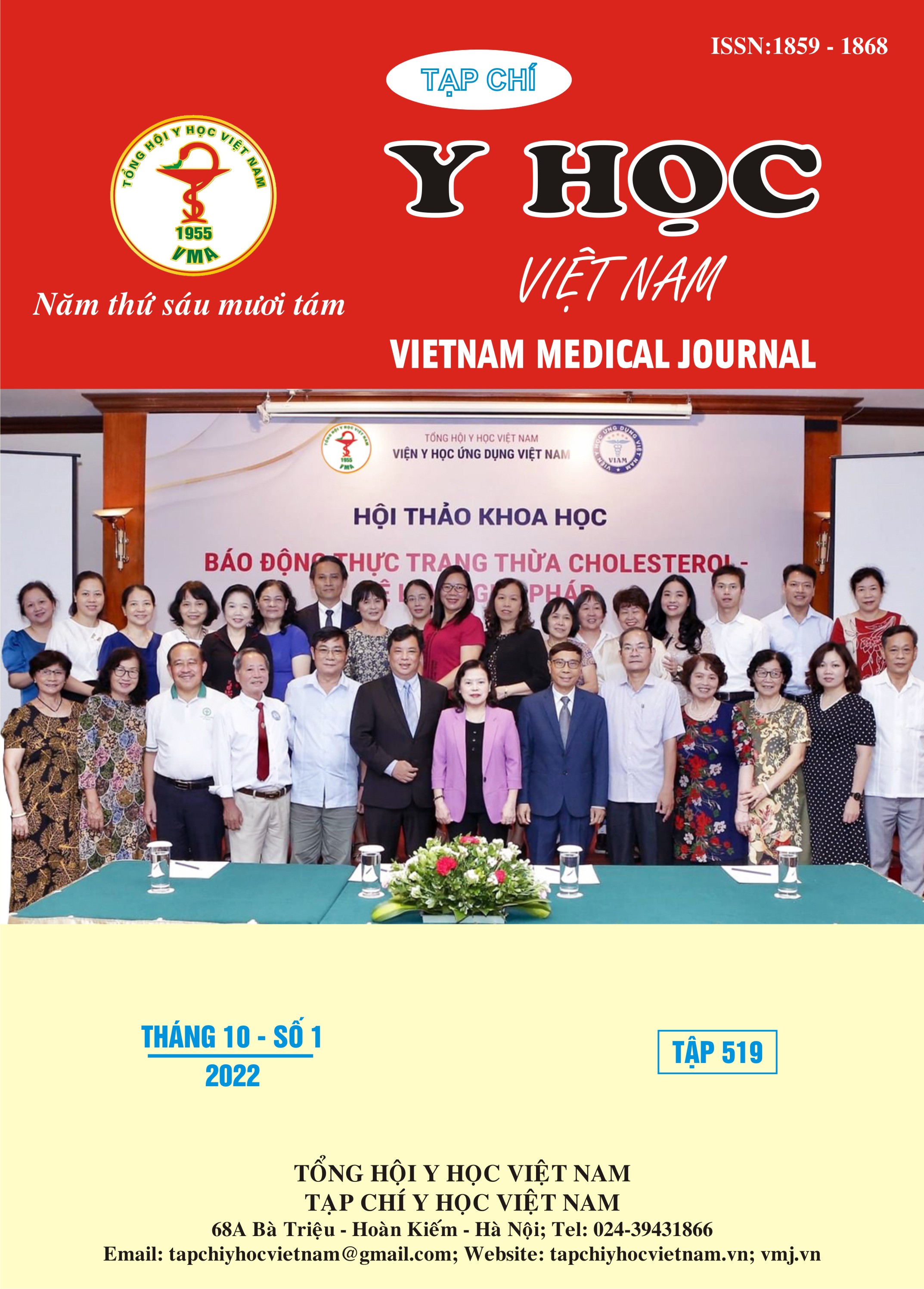SWALLOWING DISORDERS AND THE CLINICAL CORRELATES IN LATE- STAGE PARKINSON’S DISEASE
Main Article Content
Abstract
Parkinson’s disease (PD) is a neurodegenerative disorder characterized by a combination of motor and nonmotor dysfunction. Swallowing disorder is a common problem in Parkinson's disease, especially in the late stage. This affects not only nutrition, food metabolism but also the therapeutic effect of drugs, and that increases the risk of fatal aspiration pneumonia. Objective: The aims of this study were to characterize swallowing disorders and analyze some factors related to swallowing disorders in patients with late-stage Parkinson's disease at the National Geriatric Hospital from August 2021 to June 2022. Methodology: Swallowing disorders were evaluated by clinical symptoms and Gugging Swallowing Screen (GUSS). Results: The average age was 71.22 ± 8.61 years, most of ages > 60, male/female rate ratios: 1.58:1. The mean duration of disease was 6.80 ± 4.13 years. The most common symptom related to swallowing disorder was the change of voice and dysphagia. The common complications are changes in eating habits, malnutrition and pneumonia. Participants with more pronounced motor sypmtoms (Higher MDS- UPDRS III scores) and longer duration had lower GUSS scores. Kết luận: In our study, the most common symptoms of swallowing disorders are speech impairment and dysphasia. The common complications are change in dietary habits and malnutrition. Patients with more pronounced motor sypmtoms and longer duration had lower GUSS scores - more severe swallowing disorder.
Article Details
Keywords
Swallowing disorder, GUSS, Parkinson’s disease
References
2. Nguyễn Thế Anh. Nhận xét đặc điểm lâm sàng rối loạn vận động và rối loạn nhận thức ở bệnh nhân parkinson cao tuổi đang điều trị tại Bệnh viện Thanh Nhàn. Tạp Chí Y Học Việt Nam. 2015;tháng 7 số đặc biệt:113-121.
3. Nguyễn Thị Khánh. Ảnh hưởng của triệu chứng vận động đối với chất lượng cuộc sống của bệnh nhân Parkinson. Tạp Chí Y Học Việt Nam. 2018;471:323-329.
4. Gillies GE, Pienaar IS, Vohra S, Qamhawi Z. Sex differences in Parkinson’s disease. Front Neuroendocrinol. 2014;35(3):370-384. doi:10.1016/j.yfrne.2014.02.002
5. Nguyễn Thị Thanh Bình. Gánh nặng chăm sóc bệnh nhân Parkinson giai đoạn cuối. Tạp Chí Y Học Việt Nam. 2019;481(1):95-100.
6. Macchi ZA, Koljack CE, Miyasaki JM, et al. Patient and caregiver characteristics associated with caregiver burden in Parkinson’s disease: a palliative care approach. Ann Palliat Med. 2020; 9(Suppl 1):S24-S33. doi:10.21037/apm.2019.10.01
7. Lê Hải Nam, Nguyễn Thanh Bình. Đặc điểm đau và chất lượng cuộc sống của bệnh nhân Parkinson. Tạp Chí Y Học Thực Hành. Published online September 2019:2-5.
8. Pagano G, Ferrara N, Brooks DJ, Pavese N. Age at onset and Parkinson disease phenotype. Neurology. 2016;86(15):1400-1407. doi:10.1212/WNL.0000000000002461
9. Nguyễn Đức Trung. Nghiên cứu rối loạn nuốt ở bệnh nhân Parkinson bằng thang điểm của Mann và một số yếu tố liên quan tại bệnh viện Hữu nghị năm 2017. Tạp Chí Y Học Việt Nam. 2018;464(3):12-19.
10.Potulska A, Friedman A, Królicki L, Spychala A. Swallowing disorders in Parkinson’s disease. Parkinsonism Relat Disord. 2003;9(6):349-353.


